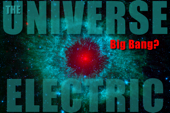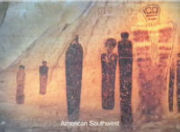The Enduring - Yet Downplayed - Mysteries of Comets
01/05/2008
"Mysteries are due to
secrecy."
- Francis Bacon
On December 24, 2007, the website Space.com published a report
entitled, "The
Enduring Mysteries of Comets." The premise is intriguing, since
it is rare for science media to acknowledge that "mysteries" of any
real significance exist for conventional theories. Unfortunately,
the report mentions few of the recent discoveries that have thrown
the popular "dirty snowball" model of comets into disarray.
"We have now had four close encounters with comets, and every one of
them has thrown astronomers onto their back foot." - Stuart Clark,
New Scientist, September 09, 2005.
The Space.com article begins with the statement, "For millennia,
comets were believed to be omens of doom." This itself is a profound
anomaly left unanswered by mainstream theorists, but the author
makes no inquiry into why this is so. Instead, his next sentence
reveals that the veil of discredited theories distorting scientists'
view of comets has yet to be lifted. "...Solving the mysteries
regarding these 'dirty snowballs' could help reveal the part they
played in the birth of life on Earth, as well as secrets concerning
the rest of the galaxy." But as we shall see as we continue, one can
only hold to the idea of comets as "dirty snowballs" by ignoring all
of the recent revelations about comets.
The first item asks, "Did comets help create Earth's seas?" The
report reads:
"For years scientists thought comets slamming against the newborn
Earth helped deliver water to a once dry planet. But roughly a
decade ago this view was shaken by the discovery that the water in
comets and Earth's oceans did not match up in terms of hydrogen
isotopes."
But the mainstream is not yet ready to abandon the notion of
primordial comets dumping copious amounts of water onto Earth. The
article continues: "In the last two years, however, researchers have
discovered comets in the outer part of the asteroid belt. These
'main-belt comets' may have the right levels of hydrogen isotopes,
and are perhaps close enough to Earth to have realistically brought
us the seas that life emerged from."
In the minds of Electric Universe proponents, most cometologists
have a distorted view of cometary water/ice. Cometary comas often
exude an abundance of what scientists interpret as "water." In fact,
what they measure as "water" is the hydroxyl radical OH, the most
abundant cometary radical, which they assume is formed by the
breakdown of water from solar UV radiation. It is this radical's
presence that leads to their estimates of the amount of water ice
sublimating from the comet nucleus.
Electrical theorist Wallace Thornhill offers a different
interpretation, consistent with the surprising discoveries of recent
years. He notes that space probes have detected the negatively
charged oxygen atom, or negative oxygen ion, close to cometary
nuclei. Additionally, spectral analysis of neutral oxygen (O) shows
a 'forbidden line' indicative of the presence of an 'intense'
electric field. Negative ions near a comet nucleus puzzled
investigators because such ions are easily destroyed by solar
radiation. Thus, investigators reviewing the findings at comet
Halley noted, "an efficient production mechanism, so far
unidentified, is required to account for the observed densities" of
negative ions.
As stated by
Thornhill, "...the intense electric field near the comet nucleus
is inexplicable if it is merely an inert body plowing through the
solar wind." But the electric model resolves the mysteries: "The
electric field near the comet nucleus is expected if a comet is a
highly negatively charged body, relative to the solar wind. Cathode
sputtering of the comet nucleus will strip atoms and molecules
directly from solid rock and charge them negatively. So the presence
of negative oxygen and other ions close to the comet nucleus is to
be expected. Negative oxygen ions will be accelerated away from the
comet in the cathode jets and combine with protons from the solar
wind to form the observed OH radical at some distance from the
nucleus."
If Thornhill is correct, the OH does not require water ice on, or
in, the comet. Though it would be irrational to categorically
exclude the possibility of ice, our probes have revealed scorched
surfaces looking more like burnt rocks than "dirty snowballs." They
are, in fact, barely distinguishable from ice-free asteroids.
The Space.com report continues with questions about the origins of
comets -- "Where do they come from?", and "Secrets regarding the
birth of the solar system?". Astronomers have long told us that
comets were born in the theoretical "Oort cloud," about 4.6 trillion
miles from the Sun. Until fairly recently it was as simple as that.
But a few years ago, cometologists began to adjust the theory,
postulating that only long-period comets were born in an
ultra-remote cloud. Scientists have not reached a consensus on where
they think short-period comets originate. "Maybe there are other
reservoirs of comets yet to be discovered," says astrophysicist
David Jewitt.
Proponents of standard theory have long claimed comets are "Rosetta
stones" that can help us decipher the origins of the solar system.
But the notion was dealt a devastating blow by the findings of
NASA's Stardust Mission. The tiny fragments of comet dust that the
mission brought back to Earth did not accrete in the cold of space,
but were formed under "astonishingly" high temperatures. Mineral
inclusions ranged from anorthite, which is made up of calcium,
sodium, aluminum and silicate, to diopside, made of calcium,
magnesium and silicate. Formations of such minerals requires
temperatures of thousands of degrees.
NASA curator Michael Zolensky said, "That's a big surprise. People
thought comets would just be cold stuff that formed out ... where
things are very cold....It was kind of a shock to not just find one
but several of these, which implies they are pretty common in the
comet."
Researchers were forced to conclude that the enigmatic particle
material formed at a superheated region either close to our Sun, or
close to an alien star. "In the coldest part of the solar system
we've found samples that formed at extremely high temperatures,"
said Donald Brownlee, Stardust's principal investigator. "When these
minerals formed they were either red hot or white hot grains, and
yet they were collected in a comet, the Siberia of the Solar
System."
Some scientists speculated that perhaps something occurred in or
very near the Sun in its formative phase, flinging immense
quantities of material out to the periphery of the Sun's domain
(far, far beyond the orbit of Pluto), all the way to the Oort cloud.
Then the researchers reminded themselves that this would produce a
mixing and contradict the zoning that is evident in the asteroid
belt. "If this mixing is occurring, as suggested by these results,
then how do you preserve any kind of zoning in the solar system,"
Zolenksy asked. "It raises more mysteries."
But today, a new report states, quite unequivocally, that parts of
Wild 2 formed in an area close to the Sun. The spacedaily.com site
writes: "The X-ray and isotopic analyses point
to gas acquisition in a hot, high-ion flux nebular environment close
to the young sun."
The startling
bottom-line is that comet scientists cannot give us any reliable
story of comet formation. And the glaring contradictions are barely
acknowledged, if at all. The "mysteries" of the Stardust mission --
which are not mysterious under an electrical model of comets -- are
not even mentioned in the Space.com report. Obviously, the question
of comets' origins is profoundly affected by the discovery of
abundant minerals that only form under super-hot temperatures.
The Electric Universe puts forth a very different hypothesis on the
origins of both comets and asteroids. In an epoch of planetary
instability in our solar system, many planets and moons, moving
through the electric field of the Sun and immersed in an
electrically dynamic environment, experienced electrical
interactions with one another. Electric arcs shattered small moons
and raked across planetary surfaces, producing the most dramatic
scarring features we see on planetary bodies. These electrical scars
include Valles Marineris, the stupendous chasm that stretches more
than 3000 miles across the Martian surface. In this view the comets
and asteroids we observe are leftovers from these violent electric
discharge events. And the composition of comets is from the same
material that planets and moons were formed.
In fact, this vision of the electrical theorists explains the next
"mystery" in the Space.com piece, "Why are comets so close to the
Sun?" The report reads, "The main-belt comets are themselves a
mystery. Until their discovery, researchers had largely supposed no
comets could have lasted that close to the sun without getting baked
away after a few centuries or millennia." But then again, if the
electrical theorists are correct, comets have not been around for
billions of years, not even millions of years. They are the residue
of catastrophe in the recent history of the solar system.
The Space.com story concludes by attempting to answer the question
of speculative "Interstellar comets." It reads:
"As our solar system
formed, calculations predict the gravitational pull of the planets
would have scattered 90 to 99 percent of all comets that once
orbited the sun away toward the stars, never to be seen again. 'If
every star does that, you would expect some of their comets to come
toward us, but no such object has ever been seen,' Jewitt said."
This admission only reinforces the failure of the standard model,
confirming that virtually nothing discovered in recent decades has
matched theoretical expectations. But in electrical terms, the idea
of comets wandering interstellar space was never a viable concept.
If comets are the remnants of electrical discharge activity within
the solar system, then their short-term and long-term orbits are the
results we should expect.
Space.com considers the above mysteries to be the greatest puzzles
for conventional comet theory. We can only urge them to more
carefully consider the following comet discoveries, none of which
are expected by a "dirty snowball" model, but which are both
explicable and predictable by the electrical one:
Cometary Jets
Supersonic jets have been seen exploding from comets' nuclei. From
the mainstream perspective, these jets are eruptions of subsurface
gas and water from solar heating. But again and again, this theory
has been refuted by observation. In the case of Comet Wild 2, some
of its nearly two dozen jets emanated from the dark, unheated side
of the
comet. And as seems to be the case with most comet jets, they
remained intact across great distances -- they did not disperse in
the fashion of a gas in a vacuum (an anomaly left unresolved, and
not even addressed by most mainstream theorists). Consider also the
jets of comet
Hale-Bopp, which began discharging (seven jets) while it was
still too far from the Sun for a "snowball" to melt.
Amazingly, as far as back as the early 20th century, the Norwegian
physicist Kristian Birkeland demonstrated experimental evidence for
the electric comet theory. He was able to emulate cometary jets from
a cathode in a vacuum tube -- Birkeland wrote: "From a cathode of
graphite there came long, steady pencils of light, which greatly
resembled the so-called eruptions or jets in comets." (See Comets:
Kristian Birkeland's Theory)
From the Electric Universe perspective, comet jets arise from the
interaction between the electric charge of the comet and the solar
discharge plasma. The comet spends most of its time far from the
Sun, where the plasma charge density is low. The comet moves slowly
and its charge easily comes into balance with that region. On the
other hand, as the comet approaches the Sun, the nucleus moves at a
furious speed through regions of increasing charge density and
varying electrical characteristics. The comet's surface charge and
internal polarization, developed in deep space, respond to the new
environment by forming cathode jets and a visible plasma sheath, or
coma. The jets flare up and move over the nucleus irregularly, and
the comet may shed and grow anew several tails. Or the comet may
explode like an overstressed capacitor (see below), breaking into
separate fragments or simply giving up the ghost and disappearing.
Cometary discharging may also occur due to any disturbances of its
electrical plasma sheath as it passes through regions of varying
electric potential. This seems to have occurred in the recent
"totally surprising" outburst of
Comet Holmes 17P as it moved away from the Sun's domain.
Comets Breaking Apart or Exploding
The unexpected break-up of comets, some at considerable distances
from the Sun, has long baffled comet investigators. In 1976,
Comet West never approached closer than 30 million kilometers
from the Sun. So when the comet suddenly split into four fragments,
astronomers were shocked.
More recently, the explosive break up of
Comet Linear in the summer of 2000 provoked even greater
amazement. The event occurred well over a hundred million kilometers
from the Sun.
In fact, eighty percent of comets that split do so when they are far
from the Sun, according to Carl Sagan and Ann Druyan, authors of the
book Comet. Comet Wirtanen fragmented in 1957 a little inside the
orbit of Saturn, and something similar occurred to Comet Biela/Bambert.
But other comets have approached much closer to the Sun and not
broken apart. The perihelion of the Great Comet of December 1680,
studied by both Newton and Halley, was less than 100,000 kilometers
from the Sun, but it did not split.
We can also point to the astonishing disintegration of Comet
Schwassman-Wachmann 3, whose catastrophic fate remains unexplained
by the scientific mainstream. Some proposed that the comet
disintegrated due to "thermal stress" resulting from the rapid
transfer of heat through thousands of feet of insulating material --
something inconceivable even if one ignores the deep freeze of the
vacuum through which the comet is moving, with its sunward face
continually changing due to rotation. Other explanations included
"the outburst of trapped volatile gases," and the suggestion that
the comet flew apart from "rapid rotation of the nucleus." One
astronomer even proposed that the comet "was shattered by a hit from
a small interplanetary boulder." This is yet another instance where
scientists' lack of consideration for an electric model has left
them unable to explain what they're seeing.
Many other "mysterious" comet discoveries and observations of comet
behavior are best explained as electrical phenomena. These include:
-
Unexpectedly
high temperatures and
X-ray emissions from cometary comas (something never anticipated
by mainstream theorists);
- The sharply
carved relief of comets
-- the exact opposite of what astronomers expected under the "dirty
snowball" model;
- The
unexplained ability
of a relatively minuscule comet nucleus to
hold in place a highly spherical coma, up to millions of miles in diamater,
against the force of the solar wind;
- Ejection of
larger particles and "gravel"
that was never anticipated under the idea that comets accreted from
primordial clouds of ice, gas, and dust;
- A short supply or complete
absence of water
and other volatiles on comets' nuclei;
- The predicted occurrence of an advance flash prior to the impact of
a projectile into the nucleus of Comet Tempel 1 (
Deep Impact.)
Recently, the journal Icarus published a report confirming that the
advance flash did indeed occur, "upstream" (and slightly off-course)
of the projectile -- exactly as one might expect of an electric
discharge just prior to impact.
----------------------------
This article began with reference to the historic quote, "Mysteries
are due to secrecy." If a kind of tacit "conspiracy" exists amongst
space scientists, it is to never speak of cosmic electricity,
despite the overabundance of evidence for electrical activity in
space. Sadly, mainstream astronomy seems still to be guided by the
axiom, "If it doesn't fit, you must forget!" But the puzzles will
not be solved by ignoring or downplaying them. And in increasing
numbers, critics of today's standard theory are coming to agree that
the key to resolving these unsolved mysteries is electricity.
Permalink to this article.
Public comment may be made on this article on the
Thunderbolts Forum/Thunderblogs (free membership required).
For a highly-acclaimed 60-minute video introduction to the Electric Universe, see
Thunderbolts of the Gods on Google Video.
|

Michael Goodspeed is a freelance journalist who lives in Beaverton, Oregon
My Archives
Chronological Archives
Archives by Author
Archives by Subject
Thunderblogs home
|




